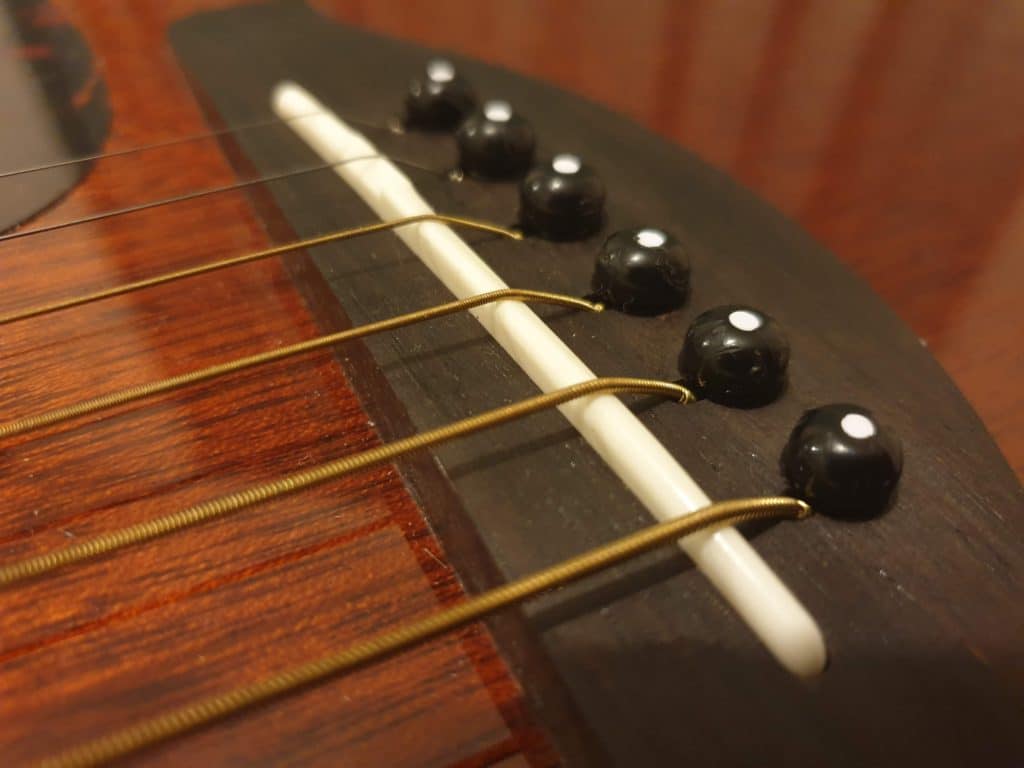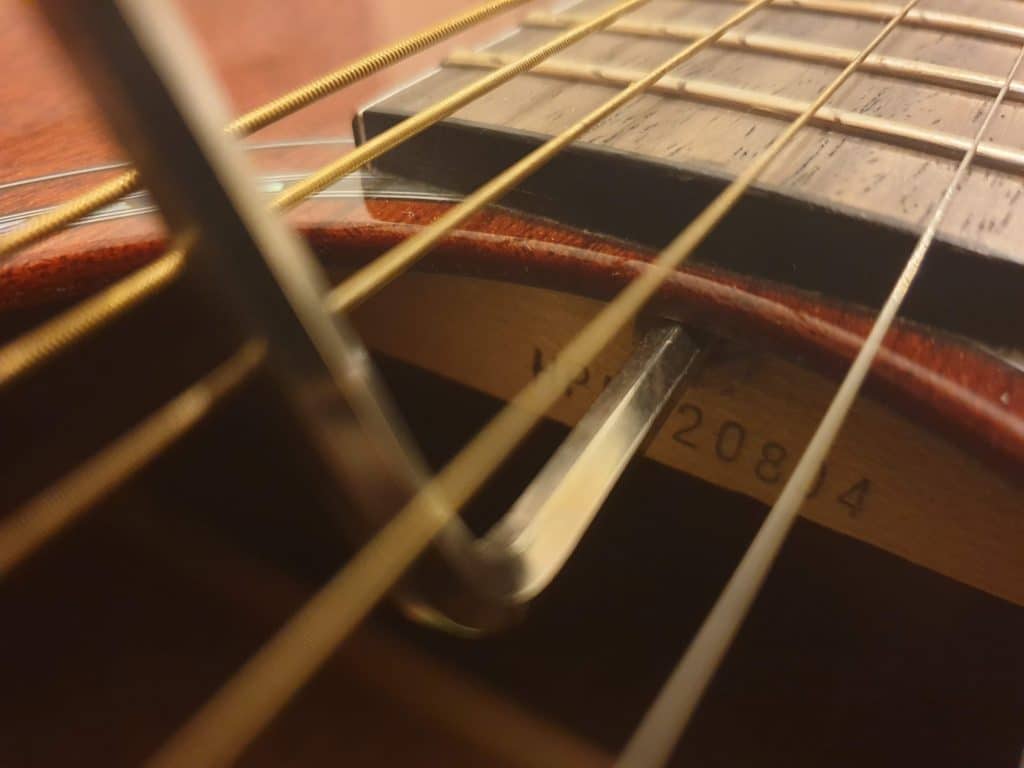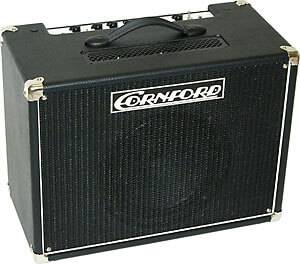Neck relief on an acoustic guitar is crucial for not just great tone, but for great playability too, much more so than on an electric guitar. Here’s all you need to know.
I’ve already covered the mechanics of truss rod adjustment for electric guitar, and why extra neck relief can help you achieve a lower action, but neck relief plays a far less critical role on an electric guitar.
Why is neck relief less critical on electric guitars?
An electric guitar is amplified, so a lot of those buzzes and chokes you encounter when playing acoustically will pretty much be compensated for in the compression of the amps gain stage(s).
Secondly, the vast majority of electric guitars are fitted with adjustable bridges, a lot of the time with individual saddles adjustable for height on each string, whereby the majority of acoustic guitars come with a fixed saddle, which can only be adjusted by sanding the bottom.

Put simply an electric gives you more margin for error tone-wise and has more methods for much easier action adjustment, so the truss rod doesn’t need to be called upon as often as an acoustic guitar.
Lastly, a straight necked (no neck relief) guitar with a flattish radius, perfectly level frets, perfectly cut nut, and bottomed out saddles is the holy grail setup for many. Relief is simply not required in many cases on electric guitar.
Why is neck relief more critical on an Acoustic Guitar?
But you’ll never get that sort of setup on an acoustic guitar, you’ll need to tinker with the truss rod at some point.
An acoustic guitar is all about a full, pure, unamplified tone. In contrast to an electric, all those buzzes, chokes, and dead-spots WILL be clearly audible and WILL kill all your inspiration and motivation. A lot of songwriters (including myself) begin the creative process on an acoustic guitar, so optimum tone and playability are a must.
As you won’t be able to readily make action adjustments at the saddle, less so the nut, the truss rod, and neck relief, become your primary setup tools on an acoustic guitar.
Using neck relief on an acoustic guitar to achieve the sweet spot of tone and playablity.

Most acoustics ship from the factory with a high saddle and action, my Yamaha FG850 in particular (video review here). That’s fair enough, better to be too high than too low, with the idea being the customer is expected to set the action to taste. Obviously, I didn’t want to hack away at the bridge right away, so I reduced the neck relief to bring down the action. This sorted the playablity to the detriment of tone. It played great, but it was buzzing all over the fretboard. After some reluctance to bastardise a shiny new guitar, It was time to sandpaper the bottom of the saddle.
At first, I feared I’d gone too low, as, even with a little relief, the was action super-slinky but rattling all over the neck. At this point, I gradually increased the relief until the perfect balance was achieved between action and tone. You’ll know when you’ve hit the sweet spot as the guitar seems to come alive, and you’ll find it hard to put it down!
Conclusion
Neck relief on an acoustic guitar is crucial for great tone and playability. Purchasing an acoustic guitar with a perfect setup out of the box is very rare indeed, so if your pride and joy isn’t playing or sounding the way you’d hoped, look into truss rod adjustment before you take it for a pro setup.




Only ever had one bad Epiphone, an LP100… Buy all accounts they make great acoustics but never owned one. Thanks for stopping by and hope it was useful.
I play an Epiphone acoustic and can’t rate it highly enough. It plays well and is a joy to tune and maintain. I play keys a lot more these days, but I still play guitar twice a week. Thanks for this interesting post.
I play an Epiphone acoustic and can’t rate it highly enough. It plays well and is a joy to tune and maintain. I play keys a lot more these days, but I still play guitar twice a week. Thanks for this interesting post.